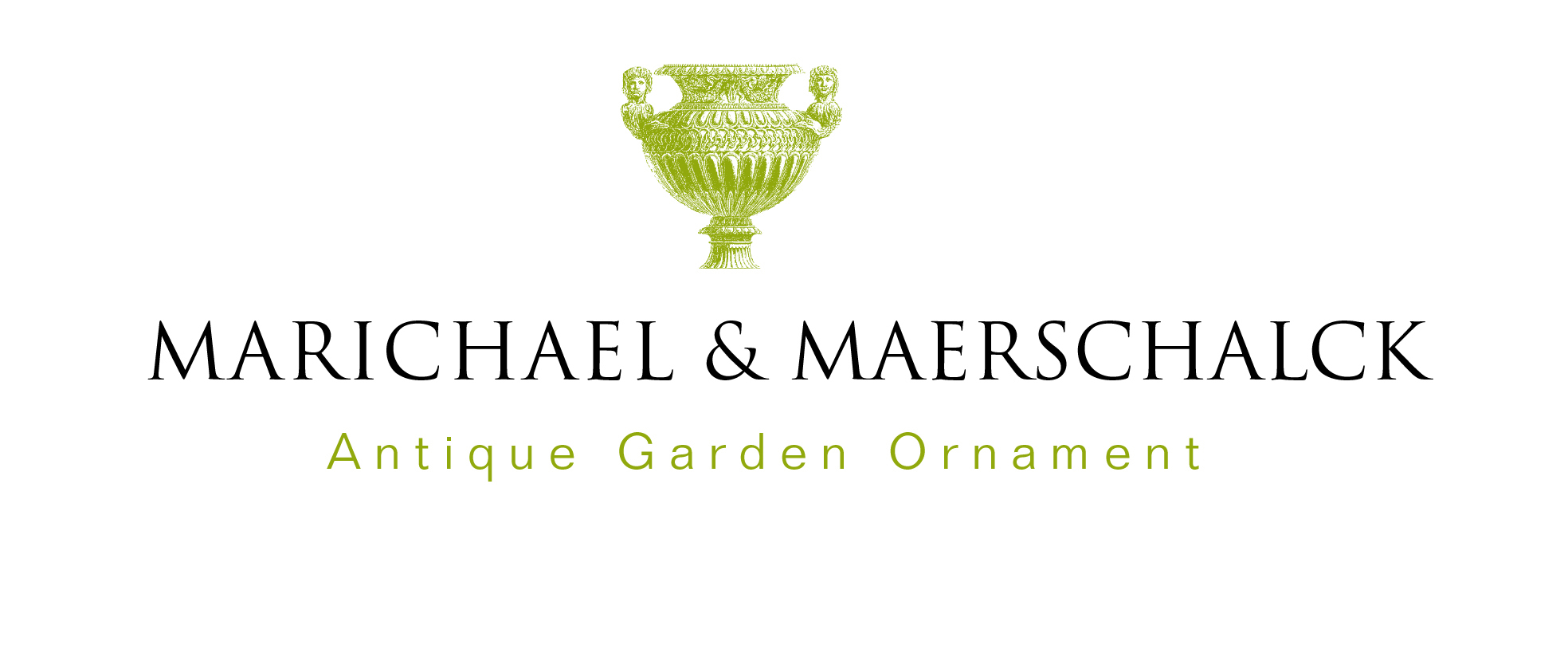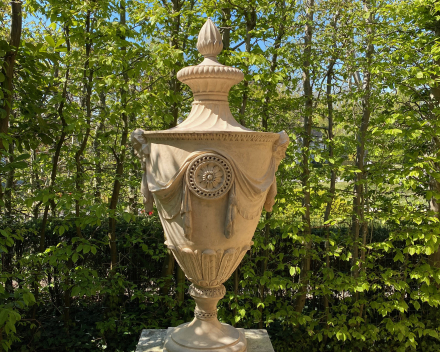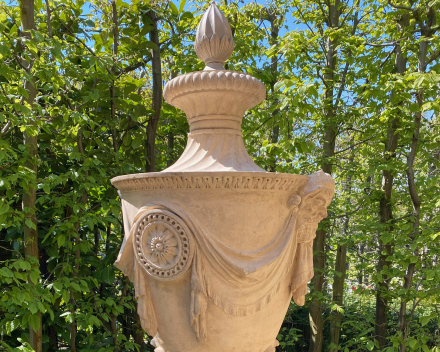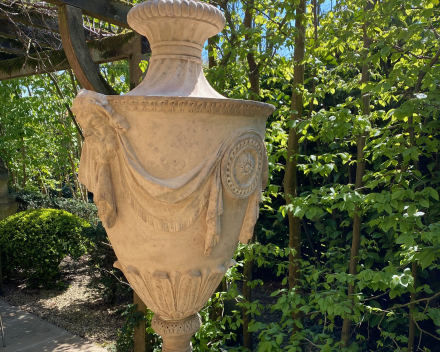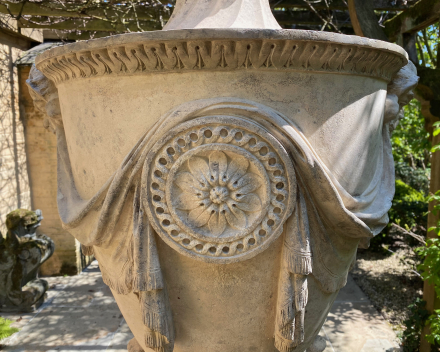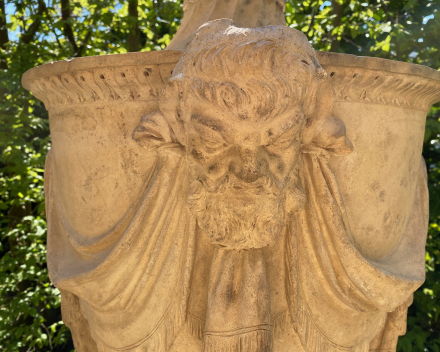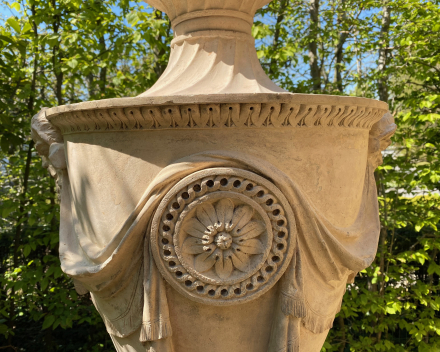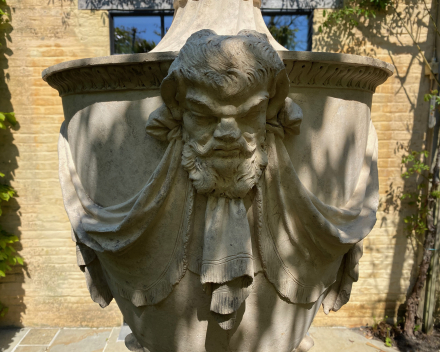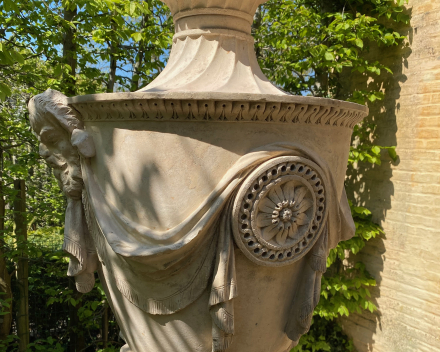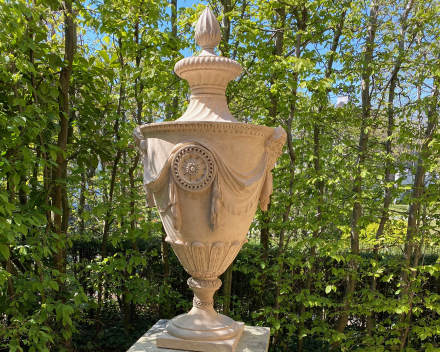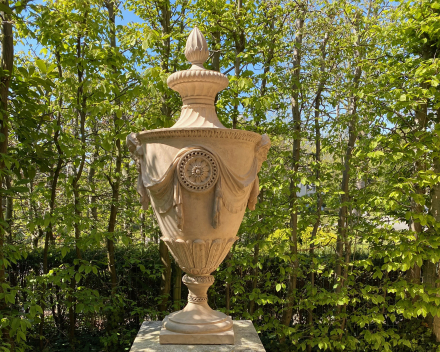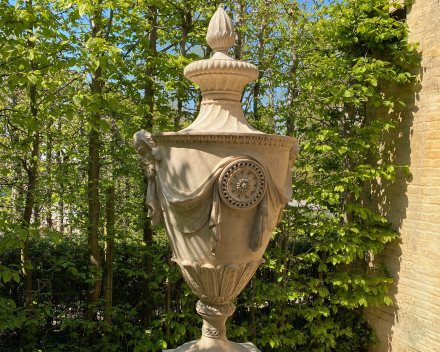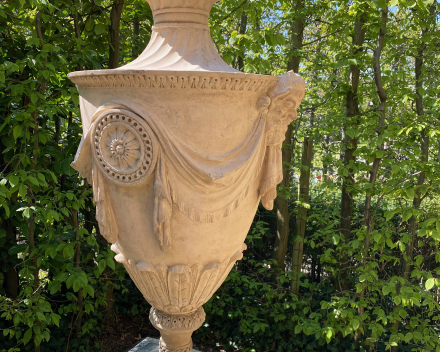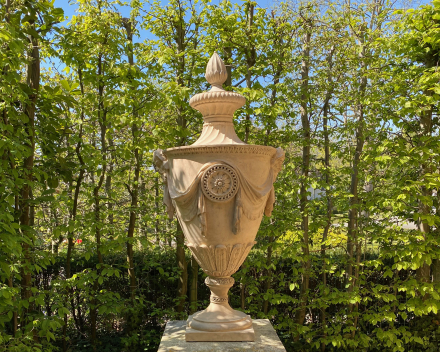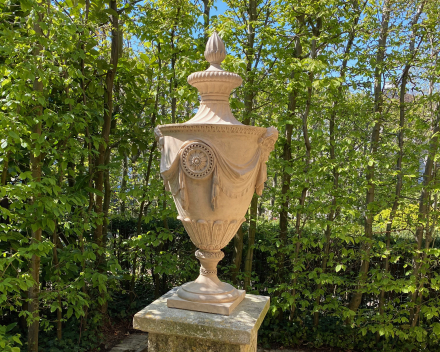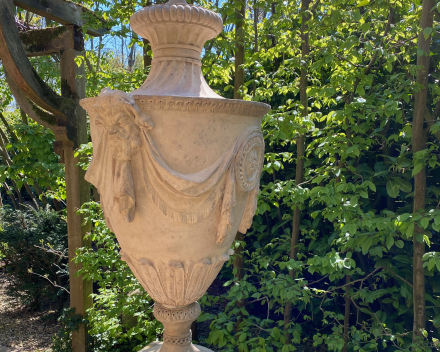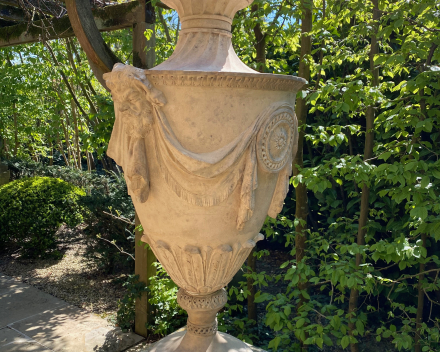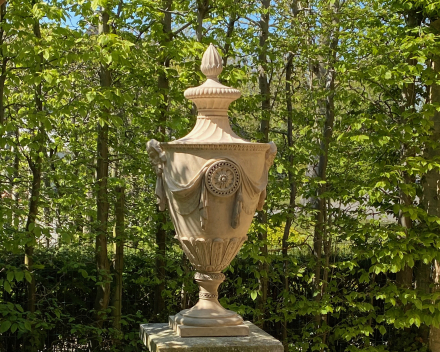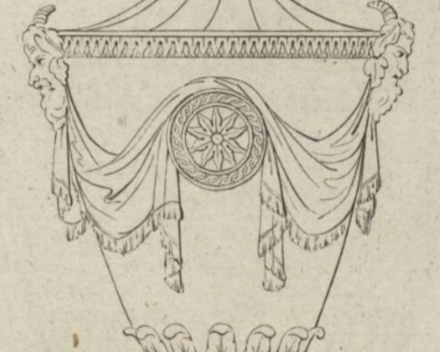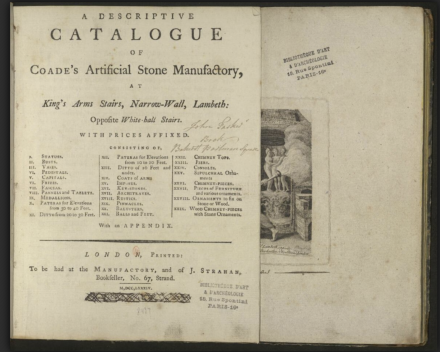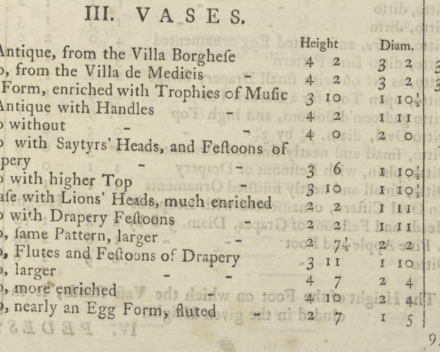- Home
- Urns
18th century Coade stone finial/ garden urn
Circa 1780
Surmounted by a domed top with cone terminal, above a circular gadrooned rim, on a spirally fluted waisted neck, above an ovoid body flanked by two satyr masks and two flower paterae, joined by drapery swags, the lower section with leaf tips of palms, on a spreading circular socle with guilloche frieze, with a square plinth; 124 cm high, 57 cm diameter. Minor restorations to the body of the urn.
The garden urn of krater- vase form appears in the illustrated 1784 .. Descriptive Catalogue of Coade’s Artificial Stone Manufactory, at King’s Arms Stairs, Narrow Wall, Lambeth in chapter III, under number 87, described as ‘An Antique (vase) without Handles, with Saytyrs’ Heads, and Feftoons of Drapery, with higher Top’ (photographs attached).
See also John PS Davis Antique Garden Ornament, 300 years of creativity: Artists, manufacturers & Materials, Woodbridge, 1991, p. 345.
An identical urn was sold at Christie’s, The Secret Courtyard, The Seago Collection, 9 June 1999, lot 239.
An urn of similar design was sold at Christie’s, The T. Crowther & Son Collection of Architectural Furnishings, 12-14 October 1992, lot 1422.
A pair of urns of similar design can be found at the Eastern terrace of Basildon Park, Reading.
Eleanor Coade’s Artificial Stone Manufactory was established at King’s Arms Stairs, Narrow Wall, Lambeth - now the site of the Royal Festival Hall. Eleanor Coade (1708-1796) and her daughter, also Eleanor (1733-1821), founded the business in partnership with a Daniel Pincot in 1769, who had been manufacturing artificial stone in Lambeth during the 1760’s. Eleanor Coade (d 1821) opened her Lambeth Manufactory for ceramic artificial stone in 1769, and appointed the sculptor John Bacon as its manager two years later. She was employed by all the leading late 18th Century architects. From about 1777 she began her engraved designs, which were published in 1784 in a catalogue of over 700 items entitled A Descriptive Catalogue of Coade's Artificial Stone Manufactory. Then in 1799, the year she entered into partnership with her cousin John Sealey, she issued a handbook for her Pedlar's Lane Exhibition Gallery. The firm became Coade and Sealey from this date and following Sealey's death in 1813, it reverted to Coade and in 1821 with the death of the younger Eleanor Coade, control of the firm passed to William Croggan, who died in 1835, following bankruptcy.
‘Coade’ stone, a manufactured stone meant to mimic limestone, was made from a mixture of ground glass, flint, sand, clay and petrified clay, a combination which often turned out to be more durable than the stone it was imitating. The mixture was then poured into moulds, dried, fired in kilns and finished by hand.
Coade stone features were produced by appointment to George III and the Prince Regent for St George's Chapel, Windsor; The Royal Pavilion, Brighton; Carlton House, London; the Royal Naval College, Greenwich; and refurbishment of Buckingham Palace in the 1820s.
Reference : LOS082020/THO122020
Literature :
Alison Kelly, Mrs Coade’s Stone, Upton-upon-Severn, 1990;
Hans van Lemmen, Coade Stone, Shire Publications Ltd, Oxford, 2006
Antieke Tuinornamenten
Viooltjesdreef 39031 Baarle-aan-de-Leie
info@antieke-tuinornamenten.be+32 (0) 9 282 20 97+32 (0) 475 53 41 63
Opening hours
Bezoek aan de tuin enkel na afspraak.
